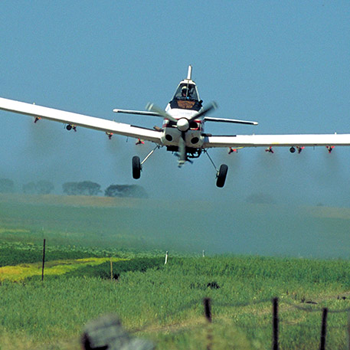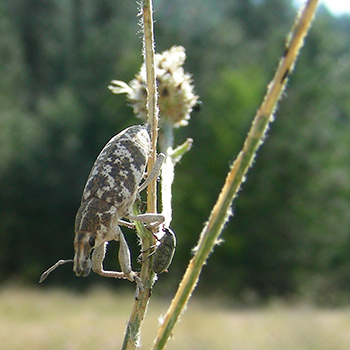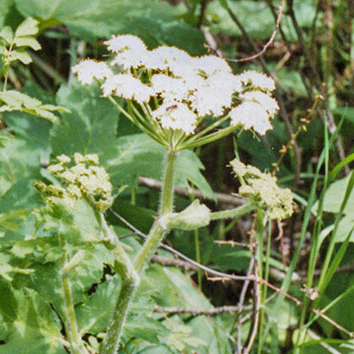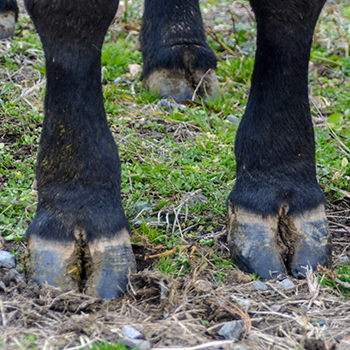
Controlling Grasshoppers and Mormon Crickets
Know what to look for to prevent large grasshopper invasion.
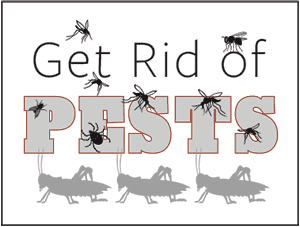
Some years, high numbers of grasshoppers can decimate forage plants. Mormon crickets (flightless katydids) are closely related insects that migrate long distances. In large numbers, they devour all forage plants in their path.
Bruce Shambaugh, state plant health director for Wyoming with USDA Animal and Plant Health Inspection Service (APHIS), says there may be dozens of species of grasshoppers in any given ecosystem, but only a few are considered pests. Most years, they cause very little problem if there is enough forage for them and for livestock and wildlife. However, if it’s a dry year and forage is short, grasshoppers or crickets can cause significant damage and economic loss. In these situations, federal or state land management agencies, county and local governments, private groups, and/or individual landowners can request assistance from APHIS to suppress insect populations.
“The Plant Protection Act covers 17 western states that have a lot of rangeland. Our program goal includes suppression treatments and population surveys to know where these insects are,” Shambaugh says. “We do a nymph survey early in the year to get numbers of young grasshoppers to help us make management decisions. We conduct an adult survey in summer and early fall.”
The information helps map out where to look the next spring, he explains. “We provide this information to all cooperators, land managers, landowners, etc., so we can work together to manage the program for grasshoppers and Mormon crickets. We have a common goal to maintain a healthy rangeland ecosystem.”
In areas with large stretches of private land, or public land with limited county road access, the agency relies on landowners who are out in their back 40s or doing their ranch work. Landowners can call a county weed and pest district, extension service, or a local land manager. Perhaps they were out fixing fence or trailing cows and noticed a lot of grasshoppers in certain areas, says Shambaugh.
Most people don’t notice young hoppers early in the year because they are less than a quarter-inch long. The rancher is usually in a vehicle or on a four-wheeler or horse concentrating on other things, he explains, but the more you know what to look for, the earlier you can manage. For instance, it helps to notice whether there are one or two insects hopping, or 10 or 20.
When it looks like there might be an impending grasshopper explosion with a lot of young insects in the spring, timeliness is crucial for suppression. The challenge is to identify a high population quickly enough.
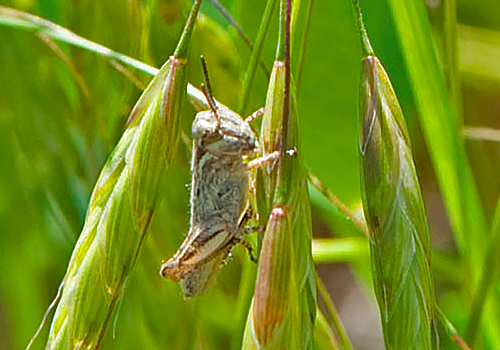 |
| The preferred chemical for treatment is an insect growth regulator, so timing is very important. |
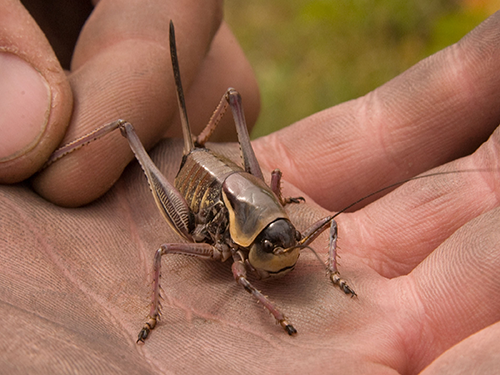 |
| In the old days, we wanted to get rid of them all, but these insects are part of the ecosystem and provide food for other animals and birds. Suppression is a better goal — keeping their numbers to a reasonable level. |
“This is why adult surveys in late summer are important — to help us identify what might be, or what might lead to, potential problems in the next year or two. If we can do some planning, and get interested landowners coming to meetings over the winter, we can do an effective job on suppression treatments the next spring,” he explains.
The preferred chemical for treatment is an insect growth regulator, so timing is very important. It doesn’t have any efficacy on adults, so the window for this treatment is much shorter than for other insecticide options. The growth regulator is the preferred choice because it is more environmentally friendly and doesn’t adversely affect as many nontargeted species, he notes. It accomplishes suppression. In the old days, we wanted to get rid of them all, but these insects are part of the ecosystem and provide food for other animals and birds. Suppression is a better goal — keeping their numbers to a reasonable level.
An effective way is with reduced agent area treatments (RAATs). Strips of chemical are put down, leaving untreated strips in between.
“This is something we’ve used for a long time for Mormon crickets. We put the treated bait in front of them as they migrate, rather than blanket coverage from aerial treatments,” says Shambaugh.
“We took that concept and started using it with the insect growth regulator. It is effective for quite a while, as the grasshoppers and Mormon crickets move over the land foraging for food. Even the ones in a non-treated swath eventually move into a treated swath,” he says.
Editor’s note: Heather Smith Thomas is a cattlewoman and freelance writer from Salmon, Idaho. Photos courtesy Bruce Shambaugh.
